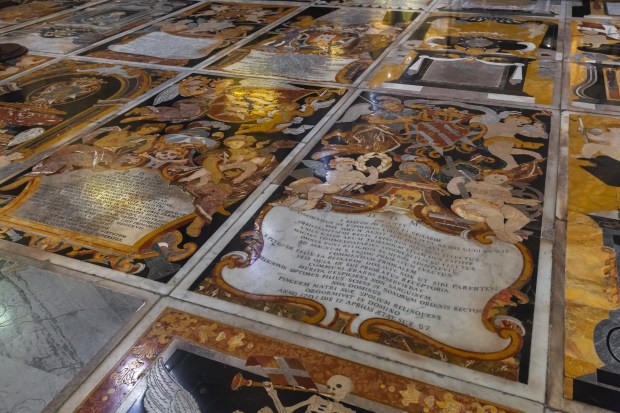October 4, feast of St. Francis of Assisi. Father Benoist de Sinety, who accompanies the pilgrimage, and Bernadette Melois, in her talk on the Liturgy of the Hours, call for a sense of wonder. This is the great legacy of St. Francis. Not the kind of rapture that some would be tempted to mock for its supposed naivety, but rather a deep and sober sense of wonder – the ability to appreciate life itself and to see it in all its splendor. To take nothing for granted. That was the gift of St. Francis.
Fortunately, it is something we can learn and practice – like learning to walk or developing good manners. All we have to do is to let our gaze enter into each thing or being, instead of hovering over it or even ignoring it. It only takes a few seconds, but it changes everything. It’s like looking at your spouse and seeing not their peculiarities but the power of a life lived together. It’s looking into your children’s faces, into their hearts, before you ask them to wash their hands after school. It’s a collection of seconds that, once accumulated, give us quiet access to the magnificent depth of life.

So I look at Malta with eyes that hope to see – to really see. This morning we’re exploring the islands again by boat, not on the open sea, but in its bays and harbors. They are the same size as they were when the buccaneers sailed them. Suddenly I realize how many church towers stand out against the blue sky. It is said that in Malta you can go to Mass in a different church every day of the year. I think of the zeal of those who built all this.
St. John’s Co-Cathedral: a shock

St. John’s Co-Cathedral is impressive – shocking even. It’s been a long time since I’ve been so amazed. It’s a flood of gold, carved woodwork covering the walls and framing the immense vaults painted by Mattia Preti. The floor is made up of 420 tombs of the Knights of Malta inlaid with colorful marble.

The air is saturated with magnificence. The tall statues of the Grand Masters look down from their mausoleums at the history of their Order. We’re visiting the chapels of each country when suddenly, at the far end of one of the apsidioles, a shadowy hole appears. It is enormous. It seizes you.
Meditation on the Beheading of John the Baptist
Pierre-Marie Dumont gives a meditative reading of “The Beheading of St. John the Baptist,” Caravaggio’s greatest work and a true Maltese jewel. The painter arrived on the island on July 14, 1607. He was fleeing Rome and a death sentence – by beheading, no less – for the murder he had committed. Grand Master Alof de Wignacourt welcomed the genius and knighted him a year later, but he didn’t necessarily approve of the man’s usual rage. Caravaggio’s mood was always the same. And it was a bad one.

And yet his tenebrism is less a pictorial technique than a way of looking at life, where the light of grace pierces the rich shadow of human depravity. He sought Christ among the poor and the prostitutes. All his works, and especially this extraordinary 5 x 3 meter (16.5 x 10 feet) canvas, are a vivid expression of the prologue of the Gospel of John: “The light shines in the darkness, and the darkness did not overcome it." Caravaggio paints his own catechism: “Two large thirds of shadow for one small third of light” -- a street girl Salome, a jailer with the very features of Alof de Wignacourt, a rope climbing out of the frame to reach the sky.
But no sooner had he finished the last brushstroke than he was arrested for another outburst of black rage in a brawl. Declared a membrum putridum et fetidum in the same chapel, he was expelled from the Order and imprisoned in the very prison that served as the setting for his painting. In the pool of blood beneath the head of a Christ-like John the Baptist, he had time to trace “Michelangelo” (his first name) with his finger - the only painting he ever signed. Painter, murderer, and good thief who never stopped searching for the face of God.
See earlier installments:













